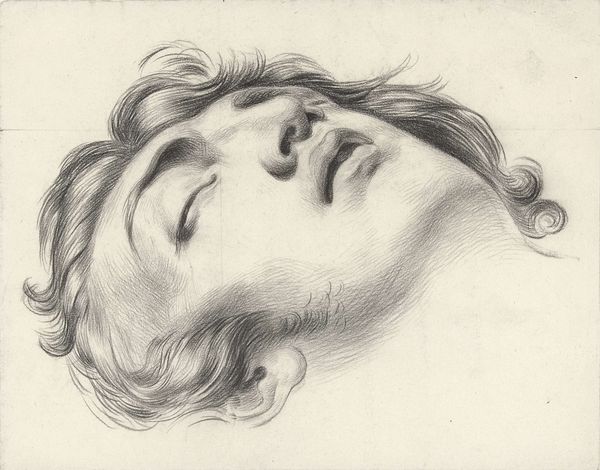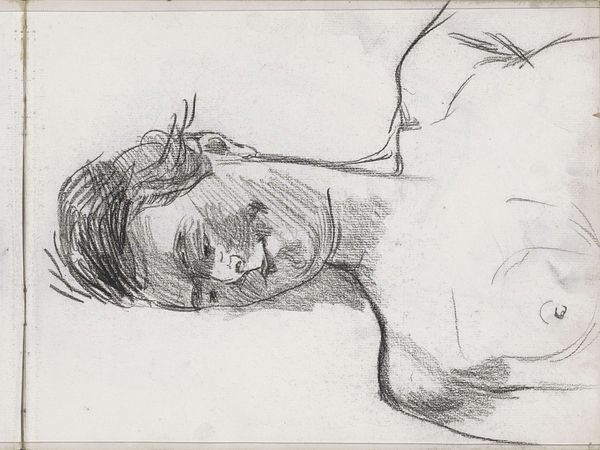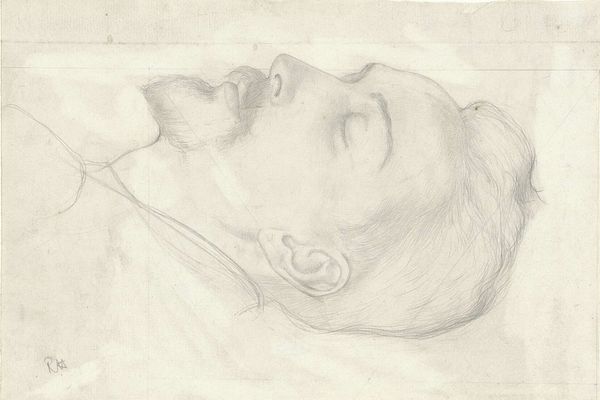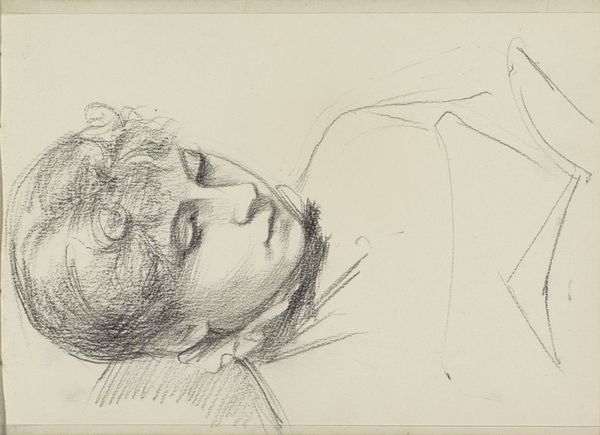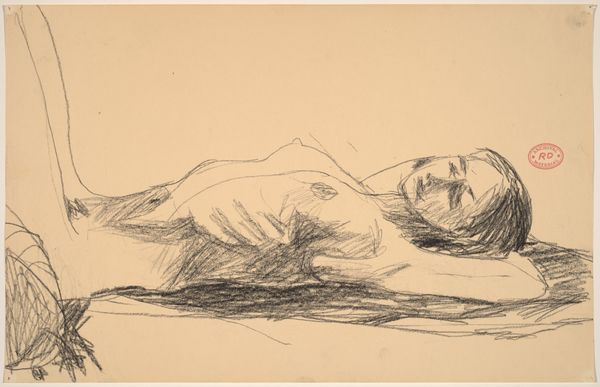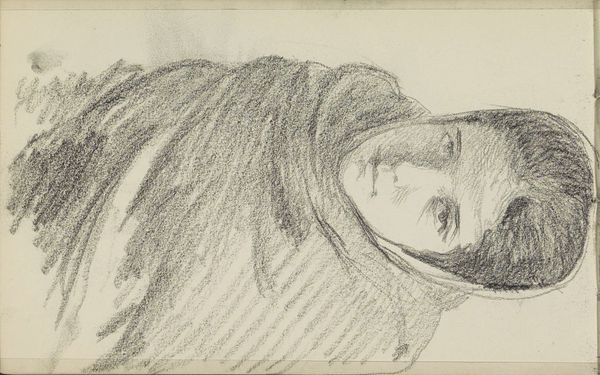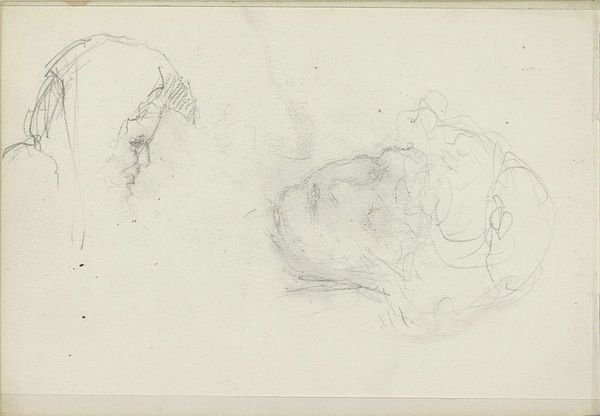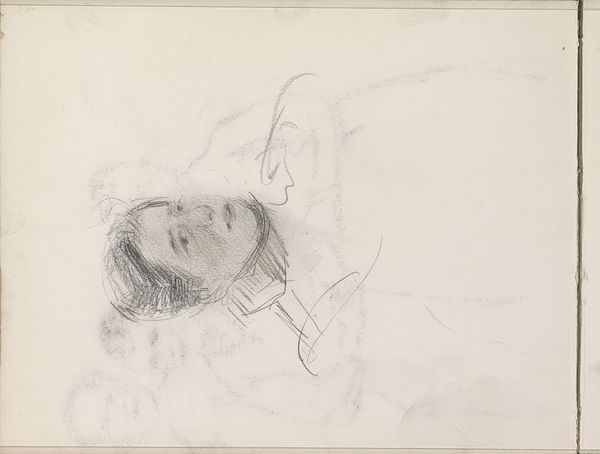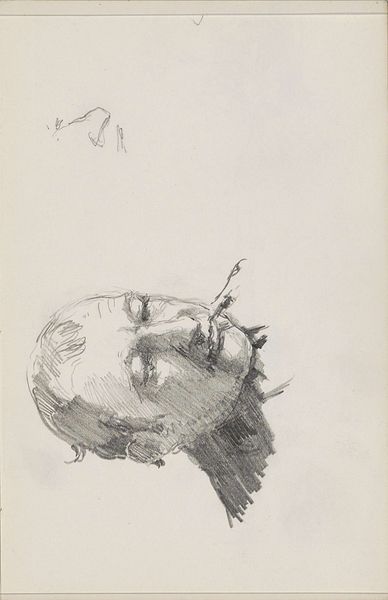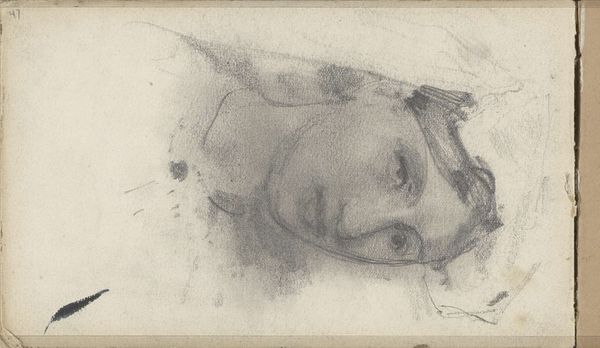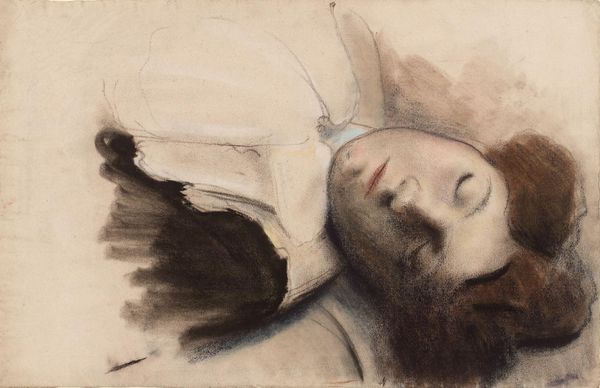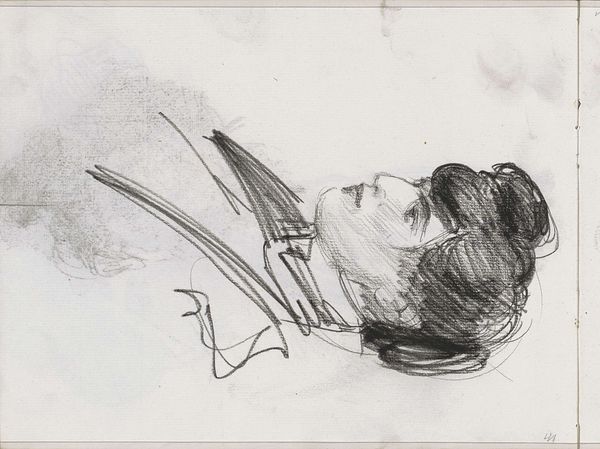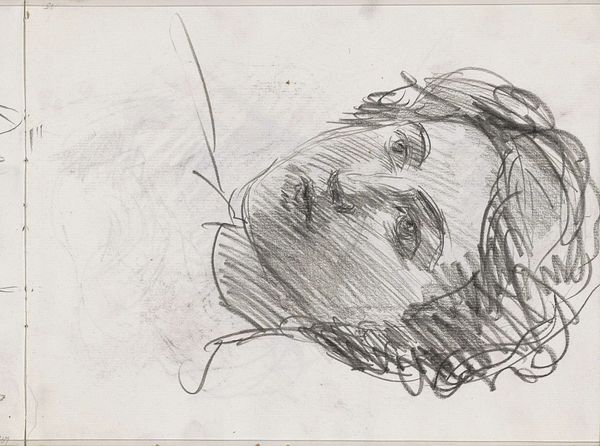
Copyright: Public Domain: Artvee
Edgar Degas made this study of a fallen jockey with charcoal and white chalk on paper. The earth-toned paper provides a sympathetic ground for the drawing, which captures a poignant moment of vulnerability. Degas carefully modulated the charcoal, building up tone to give the face volume and weight. The addition of white chalk creates highlights, accentuating the fall of light across the jockey’s face and hair, giving a soft glow. Degas was clearly interested in the working-class men who risked their lives in the sport of horse racing. The choice of charcoal is significant; it is a humble material, directly linked to the earth, and well-suited to capturing the harsh realities of working life. The quick gestural strokes and smudging create a sense of immediacy, almost as if the artist were present at the very moment of the fall. By focusing on materials and processes, we can understand how Degas elevated this fleeting, tragic moment, infusing it with dignity and quiet respect.
Comments
No comments
Be the first to comment and join the conversation on the ultimate creative platform.

